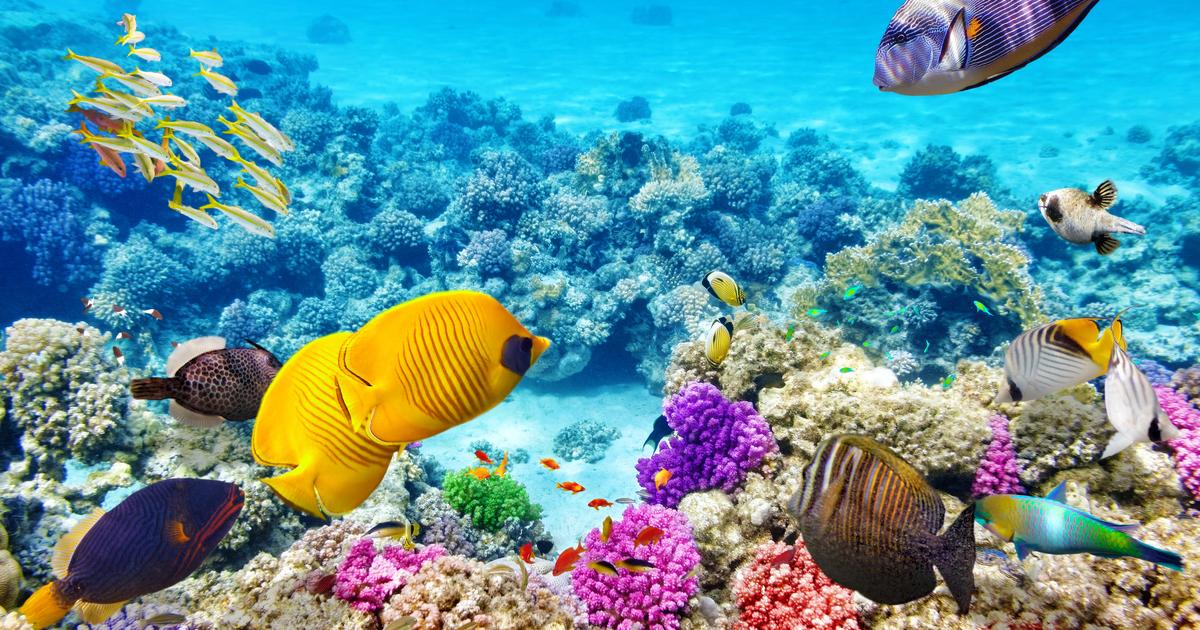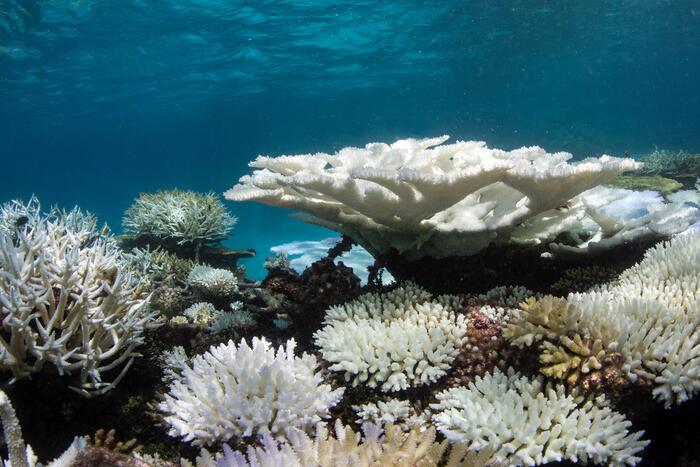Lying off the coast of Queensland, the Australian Great Barrier Reef is the largest living structure on the planet, larger than Italy.
Unesco declared it a World Heritage Site for its spectacular beauty, but corals also fulfill a critical function for the health of the Earth: they are considered the lungs of the ocean and are the habitat of thousands of species of fish and mollusks.
In the early 1980s, a group of Australian scientists discovered that corals only reproduce once a year, when they simultaneously shed millions of eggs and sperm that will meet on the sea surface to form larvae.
Among these scientists was the marine biologist Peter Harrison of Southern Cross University, who has devoted his entire career to studying the regenerative capacity of corals.
In the last decade he has seen how climate change threatens this natural process.
High temperatures have caused three massive bleaching episodes in the last five years, when corals expel the algae that feed them and therefore lose their color, turning white: “The difference between life and death for corals during the summer is only 1.5 or 2 degrees centigrade.
If the sea water exceeds the usual maximum temperature that corals are used to by more than 1.5 or 2 degrees, then they begin to bleach.
And if this stress continues for weeks and months, the corals die because they run out of energy. "
“Corals are one of the ecosystems that are on the front lines of the battle against climate change.
If we are willing to let the corals of the planet die without doing anything, then when will we start taking it seriously? "
If there are fewer corals capable of reproducing, and they only have one chance per year to do so, it means that the natural recovery cycle is not long enough for the corals to regenerate.
When Peter Harrison discovered that corals needed human intervention to survive, he developed an assisted reproduction technique to multiply their reproductive capacity.
Through this method, his team collects eggs and sperm released by corals (before they are lost or eaten by other animals) and groups them in a network in the form of a floating pool in the sea to form the larvae.
Then he transfers the larvae to the most deteriorated areas of the reef to recover.
Harrison has already shown that the technique works with several small-scale experiments that began in 2016, but this year he is leading an ambitious project to
in-vitro
fertilize
larger areas of the Great Barrier Reef.
There is a key element that guarantees the success of his formula: the biologist chooses with precision the working area and only harvests eggs and sperm among the corals that have survived high temperatures without bleaching.
In this way, it reinforces the natural selection process to create resistant corals that, when they are adults and capable of reproducing, will transfer these more adaptable genes to their offspring: “Heat tolerance is very important because it really doesn't make sense to make all this effort to create coral populations that are similar to those that died.
Therefore, the objective is to help nature by increasing the rate at which we can distribute these more heat tolerant larvae within the ecosystem so that it has a better chance of surviving future high temperature events. "
After years of research, Harrison is capable of obtaining hundreds of millions of larvae, but for the project to be developed on a large scale, community intervention is required.
With this in mind, the Great Barrier Reef Foundation, the main organization in charge of protecting the reef, is studying how to obtain the greatest regenerative impact at the lowest cost.
Its director Anna Marsden has decided to involve one of the most active sectors in the area: “The tour operators who take visitors to marine wonders are the definitive guardians of these ecosystems.
2020 has been a very difficult year for tourism in the Great Barrier Reef because of the covid.
But since many of the small businesses still wanted to work, it turned out to be the perfect year to teach tourist boats this fertilization technique.
Thanks to this, we now have a larger army of environmentalists who have received training to participate in the project. "
Marsden's plan is that very soon tourists who are attracted to this underwater wonder become “citizen scientists” for a day and actively participate in its salvation: “Corals are one of the ecosystems that are in the first line of battle against climate change.
So they are the best symbol of what is happening and how humans are responding.
If we are willing to let the corals of the planet die without doing anything, without changing our habits or helping these ecosystems adapt to climate change, if we do not take their survival seriously, then when will we start taking it seriously? "
Ecotourism has long been successful in Australia.
In one of the Queensland government conservation centers they have been able to take advantage of the interest that tourists have in helping and have involved them in their mission to monitor the sea turtles that live in the Great Barrier Reef.
During the breeding period, between November and March, every night about 70 visitors help the guides to count the eggs laid by the turtles on the coast.
It's such a popular experience that all tickets have been sold out for this season.
You can follow
MATERIA
on
,
,
or subscribe here to our
Newsletter












/cloudfront-eu-central-1.images.arcpublishing.com/prisa/KMEYMJKESBAZBE4MRBAM4TGHIQ.jpg)


